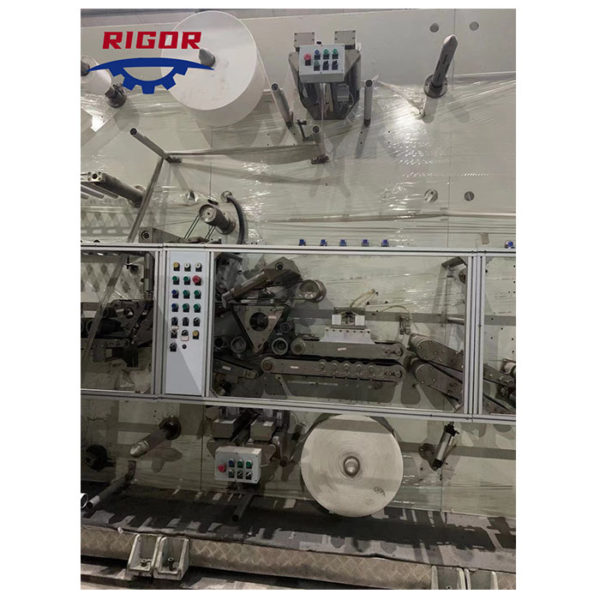Automated Processes: Automated systems handle critical manufacturing steps, reducing variations caused by human error and ensuring uniformity in cutting, shaping, and bonding of materials.
Precision Control Systems: Machines use precise control systems to regulate parameters like material tension, temperature, pressure, and speed, ensuring uniformity throughout the manufacturing process.
Quality Sensors and Inspection: Integrated sensors and inspection systems continuously monitor the production line, detecting irregularities, defects, or deviations from set standards. This allows for immediate corrective action to maintain consistent quality.
Standardized Processes: Standard operating procedures and predefined settings for different napkin sizes and designs ensure that each product adheres to established quality standards consistently.
Material Handling Techniques: Automated material handling systems maintain the integrity of raw materials, ensuring that each component used in the napkins meets specific quality criteria before being integrated into the production process.
Real-time Monitoring and Feedback: Data collected during production is analyzed in real-time. Any deviations or anomalies are identified, and adjustments are made promptly to maintain uniform quality.
Regular Maintenance and Calibration: Scheduled maintenance and calibration of machine components ensure that the equipment operates optimally, reducing the risk of variations due to mechanical issues.
Quality Assurance Checks: Random samples are periodically tested in laboratories to validate the quality of finished napkins, confirming that they meet absorbency, strength, and safety standards.
Training and Skill Development: Well-trained operators oversee the production process, ensuring that they understand quality standards, follow procedures meticulously, and identify and address any quality concerns during production.
Continuous Improvement Initiatives: Regular assessments of processes, materials, and machinery are conducted to identify areas for improvement. Implementing changes based on these assessments enhances product consistency and quality.
By integrating these measures, sanitary napkin manufacturing processes ensure consistent and uniform product quality, resulting in reliable and high-performing products for users.
In a baby diaper manufacturing machine, the even distribution of absorbent materials, such as fluff pulp or superabsorbent polymers (SAP), is crucial for uniform absorption and effective leakage protection. Several methods ensure the even distribution of these materials:
Feeding and Layering Systems: Automated systems manage the feeding of absorbent materials onto the diaper assembly line. These systems distribute the materials evenly across the width and length of the diaper.
Conveyor and Spreading Mechanisms: Conveyor belts or mechanisms are designed to spread the absorbent materials evenly as they move through the production line. This ensures consistent coverage within the diaper structure.
Precision Cutting and Shaping: The machine includes mechanisms for precise cutting and shaping of the absorbent materials, ensuring they match the dimensions of the diaper and are evenly distributed across its surface.
Layering Techniques: Specific layering techniques are employed to evenly distribute absorbent materials within the diaper's core. These techniques ensure a balanced distribution without clumping or uneven density.
Controlled Application and Spreading: Automated systems control the application and spreading of absorbent materials, baby making machine ensuring uniform coverage and distribution across the diaper's surface.
Adjustable Settings and Controls: Operators can adjust settings and controls on the machine to accommodate variations in the amount or distribution of absorbent materials based on specific diaper designs or product requirements.
Real-time Monitoring and Feedback: Sensors and monitoring systems continuously track the distribution of absorbent materials. Any deviations or inconsistencies are detected in real-time, allowing for immediate adjustments to maintain even distribution.
Quality Control Checks: Automated inspection systems verify the distribution of absorbent materials. They detect any irregularities or clumps, ensuring that the materials are evenly spread throughout the diaper.
By incorporating these methods and mechanisms, baby diaper machines ensure the even distribution of absorbent materials, providing diapers with consistent and reliable absorption capabilities for maximum comfort and protection.

Previous: None.
Copyright:@2020-2021
Comments Please sign in or sign up to post.
0
0 of 500 characters used